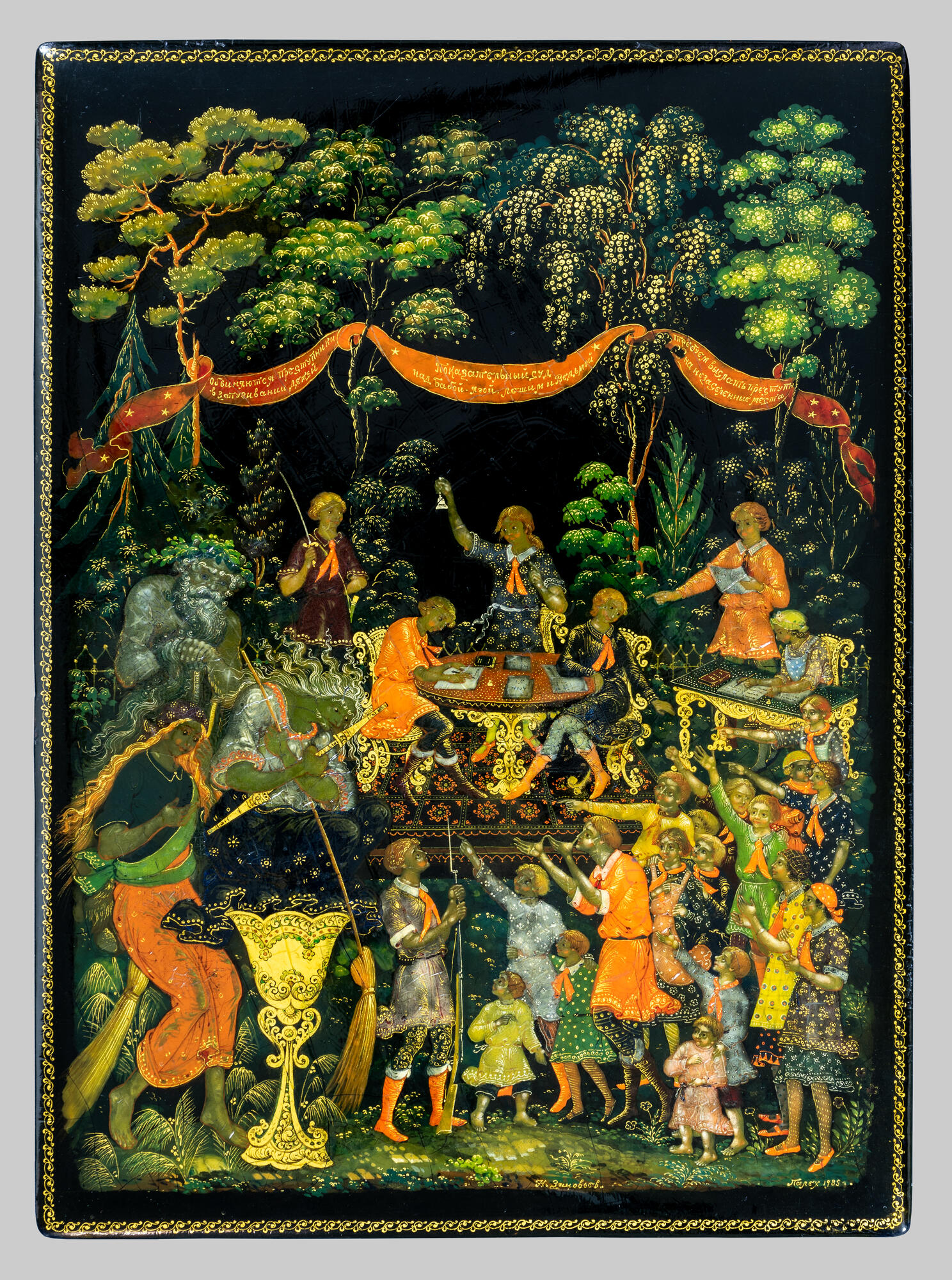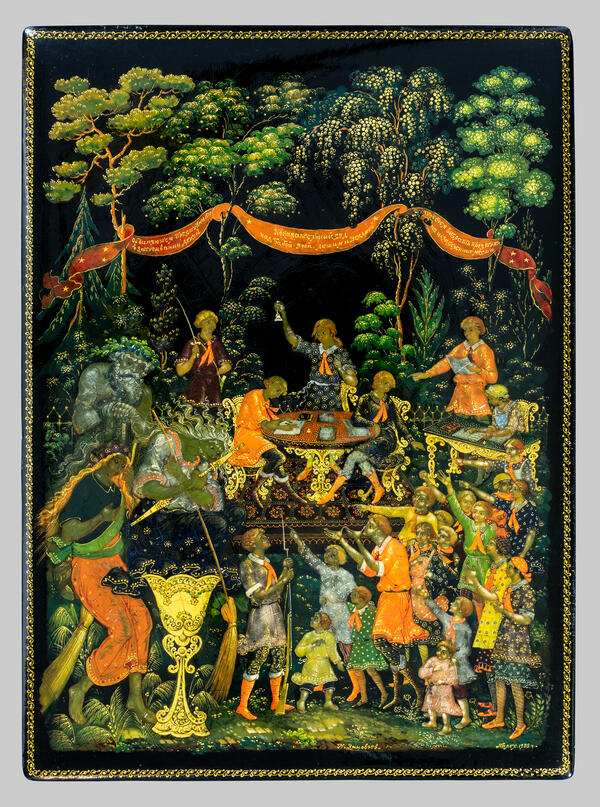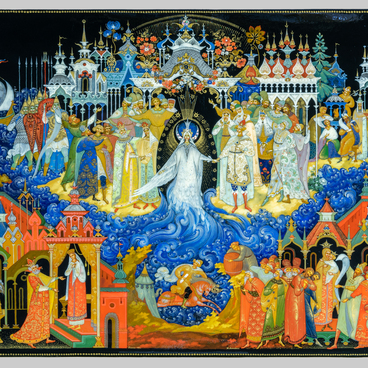Nikolai Zinoviev created ‘The Pioneers Judge Baba Yaga, Leshiy and other fairy tale characters’ artwork in 1933. He opted for the vertical form of the casket, which is a classic one in Palekh art.
The artist was born into a long line of icon painters — the Zinoviev family. He started out painting icons, then he became a renown painter of fine miniatures, restorer, and theoretician of the Palekh art. Nikolai Zinoviev is the only artist in Palekh who painted children. Local painters struggle with creating the figures of children. Children were not often depicted on icons.
There are two composition options for ‘The Pioneers Judge Baba Yaga, Leshiy and other fairy tale characters’ artwork. The artist painted one of them on a large square trey. The other is on this casket, which is now stored in the State Museum of Palekh Art.
In the center, one finds the pioneers, sitting behind two tables. The girl acting as a chairwoman is ringing the bell and calling for silence, just like in adult life. The children are not calming down easily — they are excited and dashing all around the place.
Besides the children, there are the fabled creatures from the fairy tales in the clearing — the very same ones that the adults scare children with when they misbehave. The crimson banner above says: ‘Public trial of Baba Yaga, a witch, a Leshiy, and a mermaid. The accused are charged with scaring children. We demand exile of the criminals to the unpopulated areas.’ The banner captures the spirit of the time. Public trials were held everywhere, and people were sent into the farthest corners of the vast country.
The artist created very vivid imagery of the foul creatures: on the left, there is a sad shaggy Leshiy, and just below him a witch sits on her broomstick. Beside her is the saddened Baba Yaga. She arrived in a mortar lavishly decorated with patters and inlays, which likens it to a precious vessel.
The researchers noted the obvious artistic merits of the work: the master built a multi-figured composition in levels, painted a graceful landscape, and painted very finely with gold. Nikolai Zinoviev himself had the following to say about this artwork: ‘I’ve been thinking a lot about this plot. Sometimes I would get disappointed in it and drop it, but ultimately the judging pioneers were well-received’.
The artist was born into a long line of icon painters — the Zinoviev family. He started out painting icons, then he became a renown painter of fine miniatures, restorer, and theoretician of the Palekh art. Nikolai Zinoviev is the only artist in Palekh who painted children. Local painters struggle with creating the figures of children. Children were not often depicted on icons.
There are two composition options for ‘The Pioneers Judge Baba Yaga, Leshiy and other fairy tale characters’ artwork. The artist painted one of them on a large square trey. The other is on this casket, which is now stored in the State Museum of Palekh Art.
In the center, one finds the pioneers, sitting behind two tables. The girl acting as a chairwoman is ringing the bell and calling for silence, just like in adult life. The children are not calming down easily — they are excited and dashing all around the place.
Besides the children, there are the fabled creatures from the fairy tales in the clearing — the very same ones that the adults scare children with when they misbehave. The crimson banner above says: ‘Public trial of Baba Yaga, a witch, a Leshiy, and a mermaid. The accused are charged with scaring children. We demand exile of the criminals to the unpopulated areas.’ The banner captures the spirit of the time. Public trials were held everywhere, and people were sent into the farthest corners of the vast country.
The artist created very vivid imagery of the foul creatures: on the left, there is a sad shaggy Leshiy, and just below him a witch sits on her broomstick. Beside her is the saddened Baba Yaga. She arrived in a mortar lavishly decorated with patters and inlays, which likens it to a precious vessel.
The researchers noted the obvious artistic merits of the work: the master built a multi-figured composition in levels, painted a graceful landscape, and painted very finely with gold. Nikolai Zinoviev himself had the following to say about this artwork: ‘I’ve been thinking a lot about this plot. Sometimes I would get disappointed in it and drop it, but ultimately the judging pioneers were well-received’.



